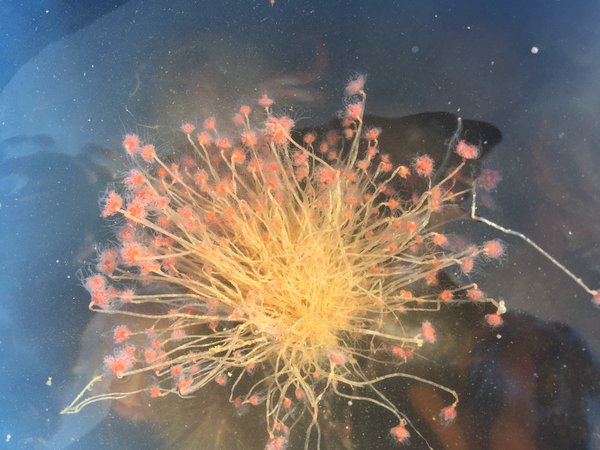 Image 1 of
Image 1 of


Pink Hydroid (Tubularia)
Common name: pink hydroid or pink-hearted hydroid
Scientific name: Tubular spp.
Locations: undersides of rocks, mooring lines, floats, lobster traps & lines
Seasonality: can be collected year round, but best colonies in summer and fall
Colors: tan stalks with pink-red tufts
Size: 1” - 3" tufts
Collected: by hand
Quantity: sold by the tuft or colony
Common name: pink hydroid or pink-hearted hydroid
Scientific name: Tubular spp.
Locations: undersides of rocks, mooring lines, floats, lobster traps & lines
Seasonality: can be collected year round, but best colonies in summer and fall
Colors: tan stalks with pink-red tufts
Size: 1” - 3" tufts
Collected: by hand
Quantity: sold by the tuft or colony
Common name: pink hydroid or pink-hearted hydroid
Scientific name: Tubular spp.
Locations: undersides of rocks, mooring lines, floats, lobster traps & lines
Seasonality: can be collected year round, but best colonies in summer and fall
Colors: tan stalks with pink-red tufts
Size: 1” - 3" tufts
Collected: by hand
Quantity: sold by the tuft or colony
Tidepool Tim says, “Tubularia hydroids are plankton feeders and so do very well in the summer and fall months here in Cobscook Bay. They are kind of a scourge for lobstermen as they sometimes cover their traps with their growth, choking off the water flow thru the trap. Traps, lines, and buoys are all affected. we find our best colonies on dock floats. These polyps grow quickly and eventually release sperm to fertilize their eggs. Nudibranchs love to eat the 'heads' of these, leaving only the stems behind.”





